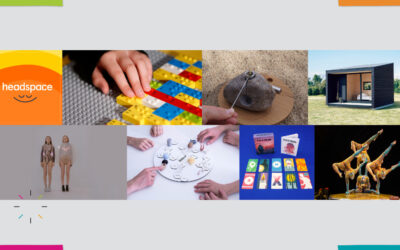Have you ever wondered why some companies offer amazing customer experiences while others leave much to be desired? The key to creating satisfying customer experiences is effective service design – a process that requires creativity, innovation, and a deep understanding of customer needs. In this context, the Design Thinking method plays a crucial role.
Quick Links
- How Creativity and Innovation Lead to Better Customer Experiences
- How to Design Services with Customer Needs in Mind
- Innovation in Service Design
- Why Prototype and Test Ideas in Service Design Using Design Thinking?
How Creativity and Innovation Lead to Better Customer Experiences
Design Thinking, with its emphasis on empathy, experimentation, and iteration, offers ideal tools for creating, improving, and delivering services that truly meet customer expectations. In this article, we will look at how the Design Thinking method can be used in Service Design to create better customer experiences, resulting in greater loyalty, better brand reputation, and ultimately better business outcomes.
How to Design Services with Customer Needs in Mind
Designing services with customer needs in mind is a key element of effective Service Design. This process begins with understanding the customer – their expectations, needs, goals, and challenges – which aligns with the empathy stage in the Design Thinking process. This can be achieved through various research methods, such as:
- interviews,
- surveys,
- observations,
- customer data analysis.
Using this information, the design team should identify and define key problems that the service aims to solve. After defining the problems, the team moves to the ideation stage, generating creative solutions that are then prototyped and tested. It is important that this process is iterative – ideas should be continuously tested, evaluated, and refined based on customer feedback. The key is to understand that the customer is at the center of the service design process, and their needs and experiences should shape every aspect of the project.
Read also: Service Designer Portfolio – A Tedious Task or Valuable Design Practice?
Innovation in Service Design
Innovation in Service Design refers to finding new and better ways to deliver services that meet and exceed customer expectations. This involves using the latest technologies, new business models, and a creative approach to problems and challenges. Innovation can manifest in many ways, from improving existing processes, creating entirely new services, to redefining the entire customer experience. Using the Design Thinking method can stimulate innovation by encouraging experimentation, considering diverse perspectives, and not fearing mistakes. It is a process of continuous learning, iteration, and adaptation to changing customer needs and market conditions. Innovative Service Design can lead to increased customer satisfaction, loyalty, and improved financial performance for the company.
Why Prototype and Test Ideas in Service Design Using Design Thinking?
Prototyping and testing ideas are key elements of the Design Thinking method, which are also extremely valuable in the context of service design. Prototyping allows transforming abstract concepts into concrete, tangible products or services that can be interactively tested. This is important because prototypes can help teams better understand how the user experiences the service and what potential problems or obstacles might arise. Testing, in turn, allows for direct feedback from users and finding out what works and what doesn’t. This stage helps identify areas for improvement that can be enhanced in the next iteration of the design process. It is through this cyclical process of prototyping and testing that Design Thinking becomes an effective tool for creating services that truly meet user needs and deliver value. Prototyping and testing ideas not only increase the chances of success but also minimize the risks and costs associated with introducing unsuitable solutions to the market.
Want to check your predispositions needed for the Design Thinking approach to develop them further? Try our Design Mindset Detector™ test – Predisposition Test





